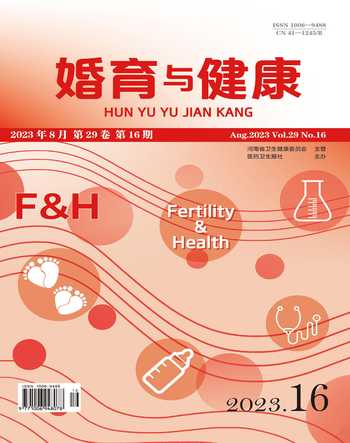不同方案治疗糖尿病合并甲状腺功能亢进症的效果比较
陆永霞
【摘要】目的:分析不同方案治疗糖尿病合并甲状腺功能亢进症的效果。方法:选择2020年4月—2022年4月期间的68例糖尿病合并甲状腺功能亢进症患者,随机分为两组,分析两组治疗前后甲状腺体积大小及甲状腺功能变化、血糖指标。结果:治疗前,两组甲状腺体积大小及甲状腺功能变化、血糖指标对比均无显著差异(P>0.05);治疗后,观察组甲状腺体积、FT3、TT3、FT4、TT4水平均明显低于对照组,观察组TSH水平明显高于对照组,观察组FPG、2h PG、HbAlc水平均明显低于对照组,差异具有统计学意义(P<0.05)。结论:和丙硫氧嘧啶相比,对糖尿病合并甲状腺功能亢进症患者使用甲巯咪唑效果更为显著,值得推广和应用。
【关键词】糖尿病;甲状腺功能亢进症;治疗效果;甲巯咪唑;丙硫氧嘧啶
Comparison of effects of different regimens in the treatment of diabetes mellitus with hyperthyroidism
LU Yongxia
The First Peoples Hospital of Yuzhong County, Gansu Province, Lanzhou, Gansu 730100, China
【Abstract】Objective: To analyze the effect of different regimens in the treatment of diabetes mellitus with hyperthyroidism. Methods: 68 patients with diabetes mellitus complicated with hyperthyroidism from April 2020 to April 2022 were randomly divided into two groups. The changes of thyroid volume, thyroid function and blood glucose indexes before and after treatment were analyzed. Results: Before treatment, there were no significant differences in thyroid volume, thyroid function and blood glucose index between 2 groups(P>0.05). After treatment, the thyroid volume, FT3, TT3, FT4 and TT4 levels in the observation group were significantly lower than those in the control group, the TSH level in the observation group was significantly higher than that in the control group, and the FPG, 2h PG and HbAlc levels in the observation group were significantly lower than those in the control group, with statistical significance(P<0.05). Conclusions: Compared with propylthiouracil, methimazole is more effective in diabetic patients with hyperthyroidism, which is worth popularizing and applying.
【Key Words】Diabetes mellitus; Hyperthyroidism; Therapeutic effect; Methimazole; Propylthiouracil
糖尿病作為一种代谢性疾病,会导致患者出现胰岛素分泌缺陷,使得该疾病显示出高血糖的特征[1]。除遗传因素以外,环境因素也会导致该疾病发生。患者通常情况下会出现多饮、多尿以及多食的明显症状,并且会明显消瘦,部分患者还可能会出现疲乏无力的情况。甲状腺功能亢进症是一种临床综合征,当产生的甲状腺激素过多,很容易引发该疾病,使得患者逐渐消瘦,并且也会导致患者出现脖子粗等问题[2]。两种疾病之间具有一定联系,均属于内分泌系统疾病,而且经过相关调查研究可以发现,在发病机制方面,两种疾病具有一定的相似性。目前,糖尿病合并甲状腺功能亢进症患者不在少数,该疾病除饮食量增加等典型症状以外,还可能会引发一系列并发症,比如心衰等,进而影响患者的生命健康[3]。面对该疾病,需要积极采取药物治疗的方式,然而由于该疾病较为复杂,病情相对来说也比较难控制,在丙硫氧嘧啶这一常用药物的支持下,效果不尽人意。鉴于此,文章主要探讨不同方案治疗糖尿病合并甲状腺功能亢进症的效果,将本文内容作如下报告。
1 资料与方法
1.1 一般资料
选取2020年4月—2022年4月的68例糖尿病合并甲状腺功能亢进症患者,随机分为两组。对照组,年龄48~63岁,平均年龄(55.22±5.45)岁;观察组,年龄49~61岁,平均年龄(55.43±5.21)岁。两组一般资料对比无统计学差异(P>0.05)。
1.2 方法


